
Concept explainers
(a)
Interpretation:
The given molecule is same or different enantiomer of the shown original molecule is to be identified.
Concept introduction:
Isomers are molecules having same connectivity. Enantiomers are nonsuperimposable mirror images. If the molecules can be interconverted by one or more single bond rotation, then they are said to be the same enantiomer or identical molecules. If the molecules are not able to interconvert, then they are enantiomers of each other.
Answer to Problem 5.37P
The given molecule is not same enantiomer as the original one.
Explanation of Solution
The given original enantiomer is:

The molecule which is to be compared is:

The given molecule is the non superimposable mirror image of THE original molecule.

These molecules cannot be interconverted by single bond rotation. Hence, the given molecule is not same enantiomer as the original one.
The molecule is not a same enantiomer as the original molecule is determined on the basis of capability of interconversion by single bond rotation.
(b)
Interpretation:
The given molecule is same or different enantiomer of the shown original molecule is to be identified.
Concept introduction:
Isomers are the molecules having same connectivity. Enantiomers are nonsuperimposable mirror images. If the molecules can be interconverted by one or more single bond rotation, then they are said to be same enantiomer or identical molecules. If the molecules are not able to interconvert, then they are enantiomers of each other.
Answer to Problem 5.37P
The given molecule is a same enantiomer as the original one.
Explanation of Solution
The given original enantiomer is:

The molecule which is to be compared is:

The molecule can be converted to original molecule.

Hence, the given molecule is a same enantiomer as the original one.
The molecule is a same enantiomer as the original molecule is determined on the basis of capability of interconversion by single bond rotation.
(c)
Interpretation:
The given molecule is same or different enantiomer of the shown original molecule is to be identified.
Concept introduction:
Isomers are the molecules having same connectivity. Enantiomers are nonsuperimposable mirror images. If the molecules can be interconverted by one or more single bond rotation, then they are said to be the same enantiomer or identical molecules. If the molecules are not able to interconvert, then they are enantiomers of each other.
Answer to Problem 5.37P
The given molecule is not a same enantiomer as the original one.
Explanation of Solution
The given original enantiomer is:

The molecule which is to be compared is:

The molecule cannot be converted to the original molecule by single bond rotation.
Hence, the given molecule is not same enantiomer as the original one.
The molecule is not a same enantiomer as original molecule is determined on the basis of capability of interconversion by single bond rotation.
(d)
Interpretation:
The given molecule is same or different enantiomer of the shown original molecule is to be identified.
Concept introduction:
Isomers are molecules having same connectivity. Enantiomers are nonsuperimposable mirror images. If the molecules can be interconverted by one or more single bond rotation, then they are said to be the same enantiomer or identical molecules. If the molecules are not able to interconvert, then they are enantiomers of each other.
Answer to Problem 5.37P
The given molecule is same enantiomer as the original one.
Explanation of Solution
The given original enantiomer is:

The molecule which is to be compared is:
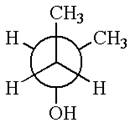
The given Newman projection can be converted to zigzag structure as shown below:

The molecule can be converted to the original molecule.

Hence, the given molecule is same enantiomer as the original one.
The molecule is a same enantiomer as original molecule is determined by converting Newman projection to zigzag structure.
(e)
Interpretation:
The given molecule is same or different enantiomer of the shown original molecule is to be identified.
Concept introduction:
Isomers are molecules having same connectivity. Enantiomers are nonsuperimposable mirror images. If the molecules can be interconverted by one or more single bond rotation, then they are said to be the same enantiomer or identical molecules. If the molecules are not able to interconvert, then they are enantiomers of each other.
Answer to Problem 5.37P
The given molecule is not a same enantiomer as the original one.
Explanation of Solution
The given original enantiomer is:

The molecule which is to be compared is:
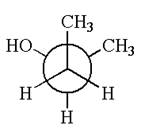
The given Newman projection can be converted to zigzag structure as shown below:

The given molecule is a nonsuperimposable mirror image of the original molecule.

These molecules cannot be interconverted by single bond rotation. Hence, the given molecule is not same enantiomer as the original one.
The molecule is a not the same enantiomer as the original molecule is determined by converting Newman projection to zigzag structure.
(f)
Interpretation:
The given molecule is same or different enantiomer of the shown original molecule it is to be identified.
Concept introduction:
Isomers are molecules having same connectivity. Enantiomers are nonsuperimposable mirror images. If the molecules can be interconverted by one or more single bond rotation, then they are said to be same enantiomer or identical molecules. If the molecules are not able to interconvert, then they are enantiomers of each other. In Fischer projection, the horizontal bonds point towards the observer and are denoted as wedge bond in the zigzag structure.
Answer to Problem 5.37P
The given molecule is a same enantiomer as the original one.
Explanation of Solution
The given original enantiomer is:

The molecule which is to be compared is:
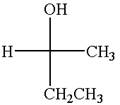
The given Fischer projection can be converted to zigzag structure as shown below:
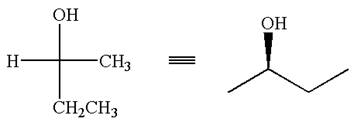
Hence, the given molecule is a same enantiomer as the original one.
The molecule is not a same enantiomer as the original molecule is determined by converting Fischer projection to zigzag structure.
(e)
Interpretation:
The given molecule is same or different enantiomer of the shown original molecule is to be identified.
Concept introduction:
Isomers are molecules having same connectivity. Enantiomers are nonsuperimposable mirror images. If the molecules can be interconverted by one or more single bond rotation, then they are said to be the same enantiomer or identical molecules. If the molecules are not able to interconvert, then they are enantiomers of each other. In Fischer projection, the horizontal bonds point toward the observer and are denoted as wedge bond in the zigzag structure.
Answer to Problem 5.37P
The given molecule is not a same enantiomer as the original one.
Explanation of Solution
The given original enantiomer is:

The molecule which is to be compared is:
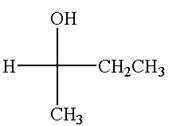
The given Fischer projection can be converted to zigzag structure as shown below:
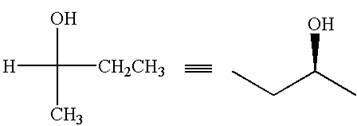
The given molecule is a nonsuperimposable mirror image of the original molecule.

These molecules cannot be interconverted by single bond rotation. Hence, the given molecule is not same enantiomer as the original one.
The molecule is not a same enantiomer as the original molecule is determined by converting Fischer projection to zigzag structure.
(g)
Interpretation:
The given molecule is same or different enantiomer of the shown original molecule it is to be identified.
Concept introduction:
Isomers are the molecules having same connectivity. Enantiomers are nonsuperimposable mirror images. If the molecules can be interconverted by one or more single bond rotation, then they are said to be the same enantiomer or identical molecules. If the molecules are not able to interconvert, then they are enantiomers of each other.
Answer to Problem 5.37P
The given molecule is not a same enantiomer as the original one.
Explanation of Solution
The given original enantiomer is:

The molecule which is to be compared is:
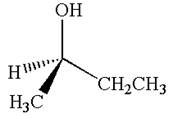
This molecule can be converted to original molecule by single bond rotation.


Hence, the given molecule is same enantiomer as the original one.
The molecule is a same enantiomer as the original molecule is determined on the basis of capability of interconversion by single bond rotation.
Want to see more full solutions like this?
Chapter 5 Solutions
ORG.CHEM W/TEXT+SOLU.MANUAL
- Consider the molecules shown here. Assign the R/S configuration to each chiral center.arrow_forwardcan you check my work for the whole page. i need to assign each chiral center in the molecules R or Sarrow_forwardCheck the box under each structure in the table that is an enantiomer of the molecule shown below. If none of them are, check the none of the above box under the table. Note: This is the last question of my homework. Please take all of the time you need!arrow_forward
- Check the box under each structure in the table that is an enantiomer of the molecule shown below. If none of them are, check the none of the above box under the table.arrow_forwardFor each molecule below, determine if it is an R or S configuration. Write the configuration below the compound.arrow_forwardHow many stereoisomers does the molecule shown below have? Draw them.arrow_forward
 Organic Chemistry: A Guided InquiryChemistryISBN:9780618974122Author:Andrei StraumanisPublisher:Cengage Learning
Organic Chemistry: A Guided InquiryChemistryISBN:9780618974122Author:Andrei StraumanisPublisher:Cengage Learning

